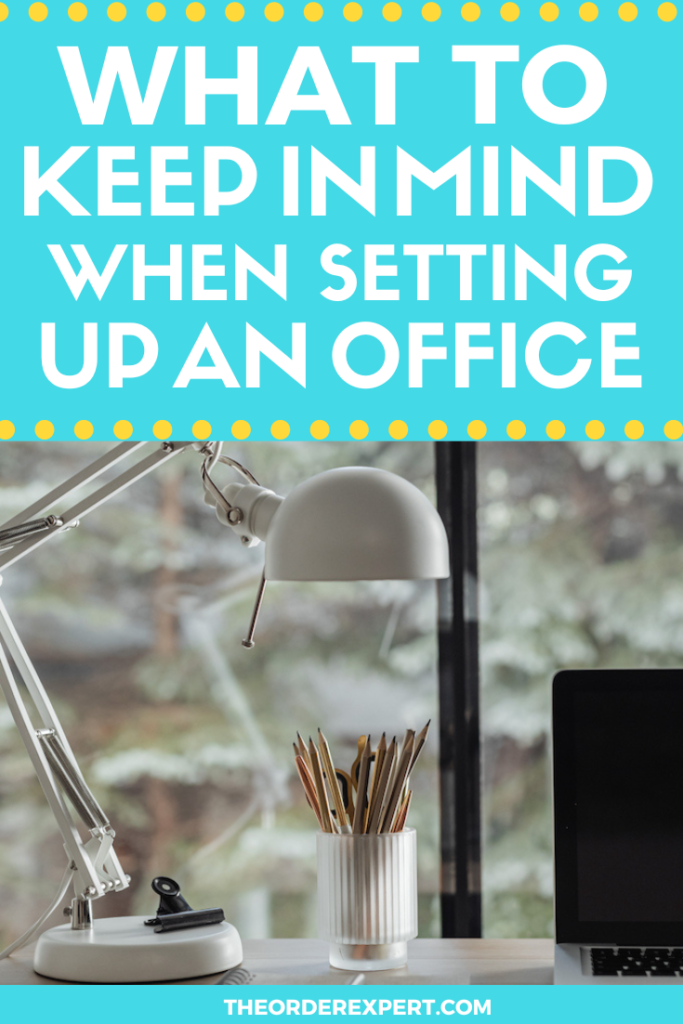
Setting up an office is always an exciting endeavor.
Unfortunately, one aspect of office setup that woefully goes overlooked by entrepreneurs is that of office organization.
You may be tempted to delay setting up your office for a future date.
But taking time now to identify where and how items will be stored in your office offers countless benefits.
Having items organized in an office allows you to quickly respond and pivot to queries and requests, provide excellent service to clients and customers, and confidently prepare for future growth and expansion.
Whether you address these items or work closely with an office manager, here are three key office organization considerations that will set your business up for success both now and in the future.
Plan for paper filing.
Identify physical paper file storage locations in your office, be it in individual offices, workstations, cubicles, or desks.
Files should be easy to locate and quick to access. Carefully consider any confidential or sensitive information and store these items in a secure location.
Create your paper filing system based on retrieval. You want to capture an accurate and specific description of an item, not an obscure, confusing, or watered-down version.
Take your time brainstorming different file categories and file types. Draft several options and modify or change items until you come up with a suitable system that meets your needs.
You should also consider a naming convention for your files. This will help streamline both the labeling and retrieval process. Use clear and descriptive language that is easy to read and understand.
Record your filing categories, file types, and naming convention in a word processing document or another file. Store your notes in a safe place so you can refer to them as needed in the future.
Decide on digital file storage.
Put careful thought into digital file storage arrangements for your business. You’ll refer to these materials on a regular, if not daily, basis, and your ability to efficiently locate information is paramount.
Decide exactly where you’ll store digital materials. Do your best to contain materials to one specific location. This may be in the cloud or locally on a computer or server.
Having information contained in a centralized location makes it easier to manage. Should you need to store information in different locations, clearly identify which materials will be stored, and where.
A digital filing system should also be based on retrieval. Aim to keep your digital and paper file systems as close to one another as possible.
You may use your paper filing system as a starting point and expand upon this basic framework depending on the type and amount of digital information you need to store.
While digital files offer more flexibility than digital files when it comes to nesting and search capabilities, it’s important to exercise caution.
No search function can accurately locate documents or files if items are incorrectly or improperly labeled. Create succinct and specific naming conventions for digital files and folders that are easily searchable.
Don’t forget to accurately record your digital file notes, including categories, file types, and naming conventions, and store them in a safe location for future reference.
Streamline office supply storage.
Determine where general office supplies will be stored in your office. Depending on the size of your office, this may be a shared office supply closet or closets, office corner, dedicated cubicle, desk, table, or rolling cart.
Office supplies should be carefully organized, labeled, and stored. If you need some organization inspiration, simply imagine yourself browsing the aisles of a brick-and-mortar office supply store.
Organize similar items together, such as paper with paper and pens with pens.
Smaller and frequently used items should be placed at eye-level or arm-level at the entryway of your office supply area. Larger and less frequently used items should be placed either above or below or towards the rear of the office supply area.
Use shelving, dividers, containers, or boxes to keep supplies both contained and compartmentalized. Clearly label these items so it’s apparent where specific office supplies can be located, found, or stored.
Lastly, create an office supply checklist with regularly and frequently used products. Store your checklist in a safe place so you can take inventory and reorder products with ease.
This post originally appeared on Inc.com.
How about you? What specifically are you going to keep in mind as you’re setting up your office? Join the conversation and leave a comment below!






0 Comments